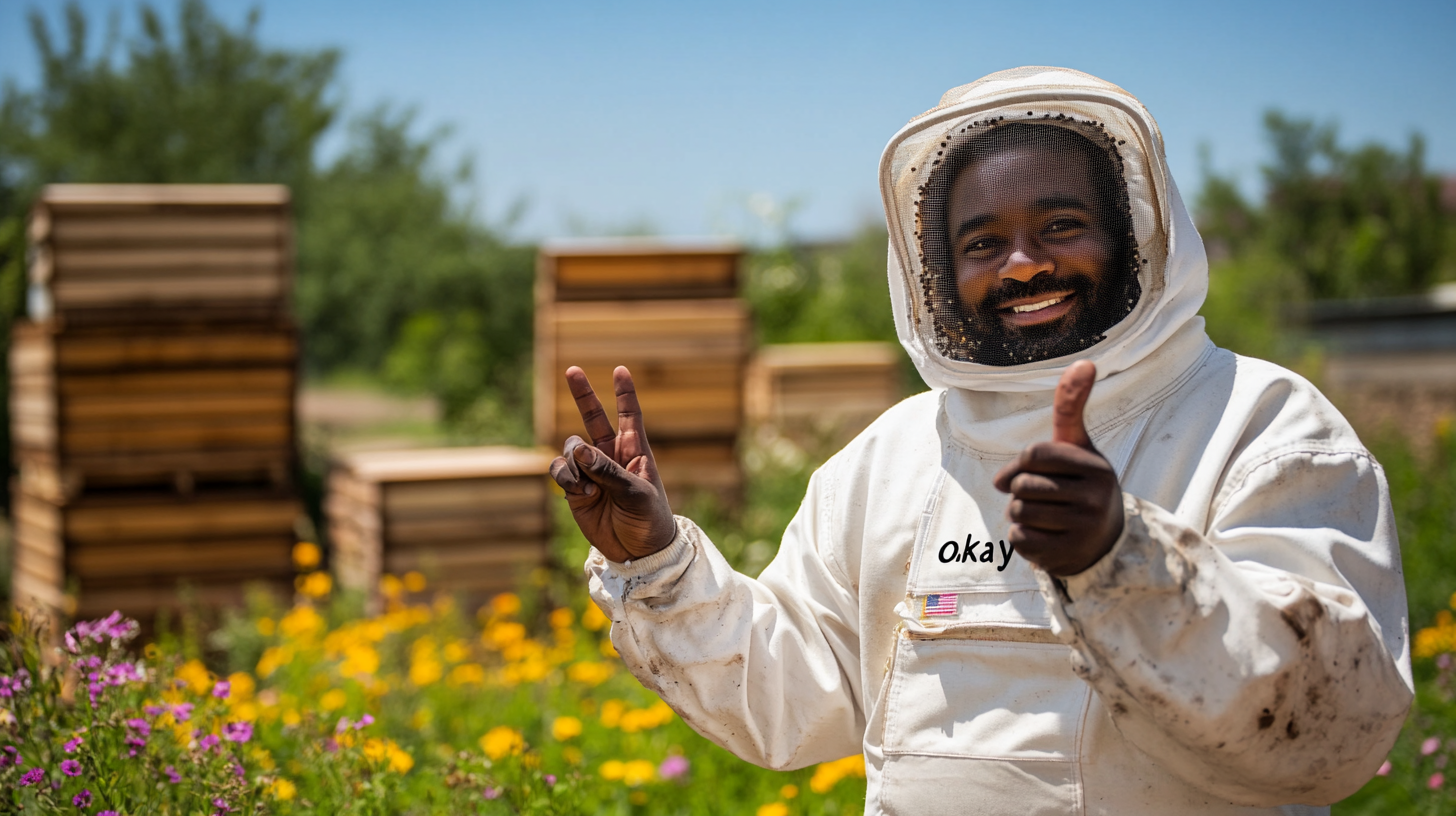Discover the best beginner beekeeping kits for 2025. Our expert guide reviews 9 top-rated starter kits with everything you need to begin your beekeeping journey successfully.
Table of Contents
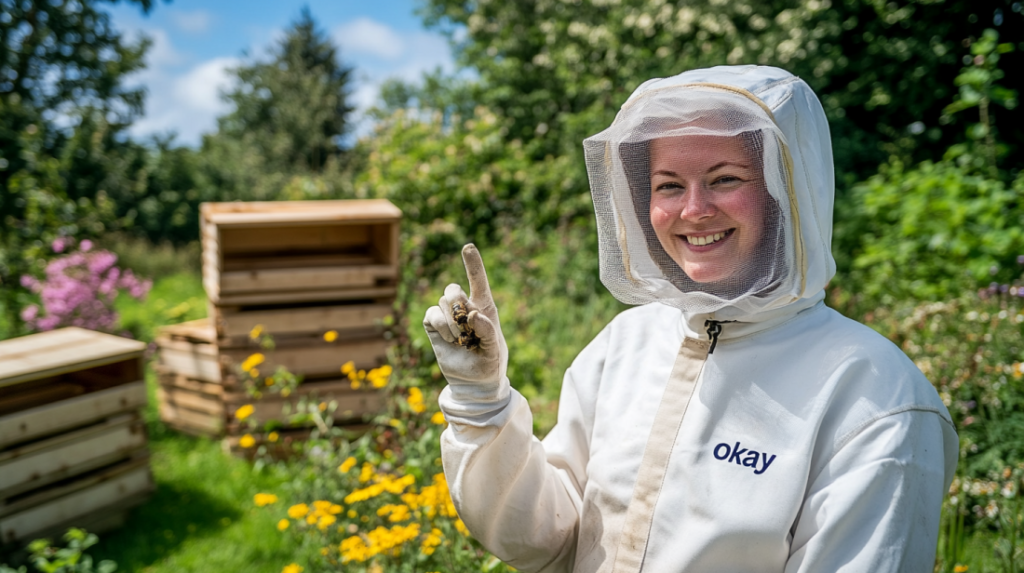
Starting your journey into beekeeping can feel overwhelming, but choosing the right beginner beekeeping kits makes all the difference between success and frustration. Whether you’re drawn to the idea of harvesting your own honey, supporting local ecosystems, or simply exploring a fascinating hobby, having the proper equipment from day one is crucial for both your safety and the health of your bee colonies.
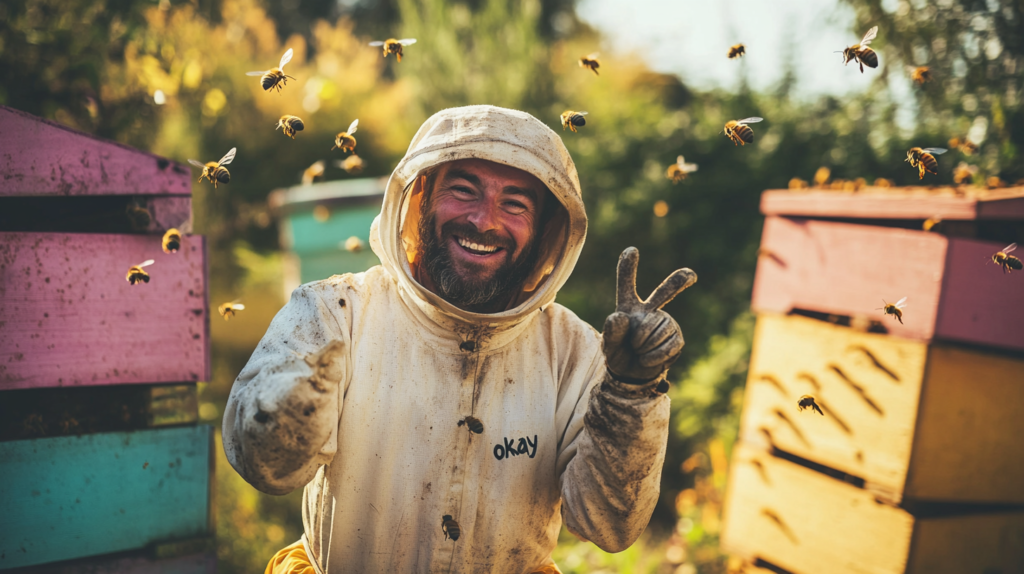
The beekeeping industry has seen remarkable growth in recent years, with the National Honey Board reporting a 35% increase in hobbyist beekeepers since 2020. This surge in interest has led manufacturers to develop comprehensive starter kits specifically designed for newcomers to the craft. These beginner beekeeping kits typically include essential protective gear, hive components, and basic tools that would otherwise cost significantly more when purchased separately.
In this comprehensive guide, we’ll explore nine top beginner beekeeping kits that have earned excellent reviews from both novice and experienced beekeepers. Each kit has been carefully evaluated based on quality, completeness, value, and ease of use for those just starting their beekeeping adventure.
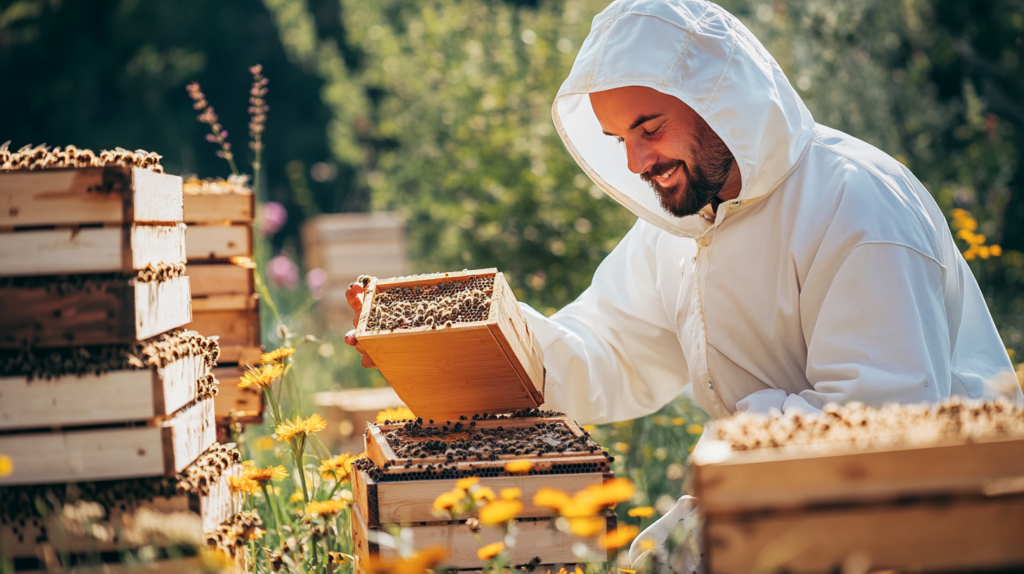
Understanding What Makes a Quality Beginner Beekeeping Kit
Before diving into our top picks, it’s essential to understand what components should be included in any worthwhile starter kit. The best beginner beekeeping kits combine safety equipment, hive components, and essential tools in one convenient package.

Essential Components Every Kit Should Include
A comprehensive beekeeping starter kit should contain protective gear as the foundation. This includes a full bee suit or jacket with attached veil, gloves, and a smoker. The protective clothing serves as your primary defense against bee stings, while the smoker helps calm bees during hive inspections.
The hive components form the second crucial category. Most kits include at least one deep hive body (brood chamber), frames with foundation, an inner cover, telescoping outer cover, and a bottom board. Some premium kits also include honey supers for harvest collection.
Tools round out the essential components, with a hive tool being absolutely necessary for prying apart frames and scraping propolis. Many kits also include a bee brush for gently moving bees and an uncapping knife for honey extraction.
Top 9 Beginner Beekeeping Kits: Detailed Reviews
1. Harvest Lane Honey Complete Beekeeping Kit

The Harvest Lane Honey Complete Beekeeping Kit stands out as our top choice for absolute beginners. This comprehensive package includes everything needed to start with two colonies, making it ideal for those who want to follow the common advice of starting with multiple hives.
What’s Included:
- Two 10-frame deep hive bodies
- 20 frames with wired foundation
- Two telescoping covers
- Two inner covers
- Two screened bottom boards
- Full bee suit with attached veil
- Leather gloves
- Smoker with fuel
- Hive tool
- Bee brush
The quality of components in this kit exceeds many competitors, particularly the sturdy construction of the hive bodies and the comfort of the protective suit. The pre-assembled frames save considerable time for beginners who might struggle with frame construction.
Pros: Complete setup for two hives, excellent build quality, comprehensive instructions Cons: Higher price point, may be overwhelming for absolute beginners Price Range: $280-$320
2. Mann Lake Basic Beekeeping Starter Kit
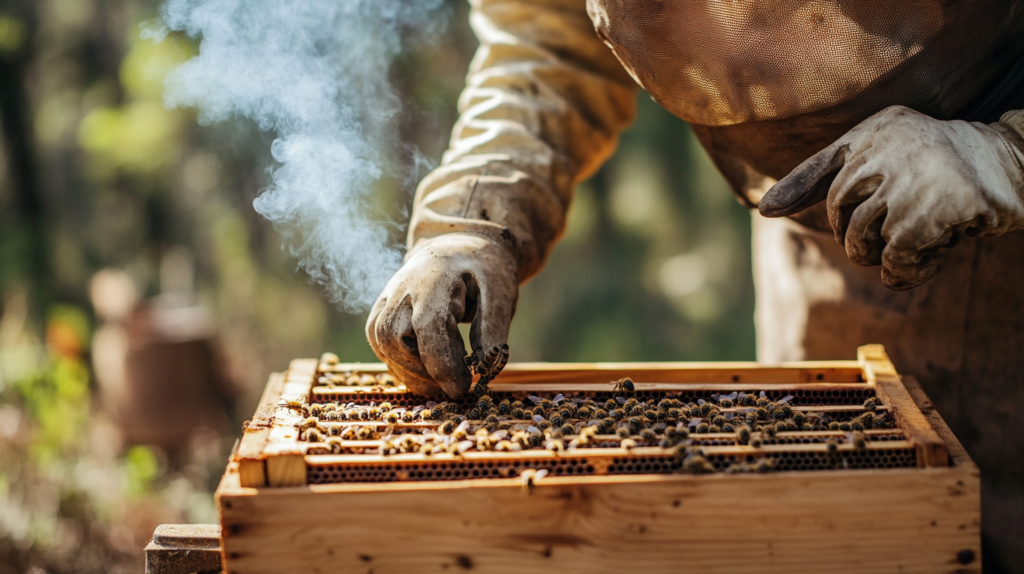
Mann Lake has built a reputation for quality beekeeping supplies, and their Basic Starter Kit reflects this commitment. While more minimalist than some options, this kit focuses on essential components with superior craftsmanship.
What’s Included:
- One 10-frame deep hive body
- 10 frames with plastic foundation
- Telescoping cover
- Inner cover
- Screened bottom board
- Ventilated bee jacket
- Goatskin gloves users report good dexterity
- 4-inch smoker
- Hive tool
The standout feature of this kit is the quality of the wooden components, which are made from pine and arrive pre-sanded and ready for optional painting or staining. The bee jacket offers excellent protection while maintaining breathability during hot summer inspections.
Pros: Superior wood quality, comfortable protective gear, trusted brand Cons: Single hive setup, no honey super included Price Range: $180-$220
3. Goodland Bee Supply Complete Hive Kit
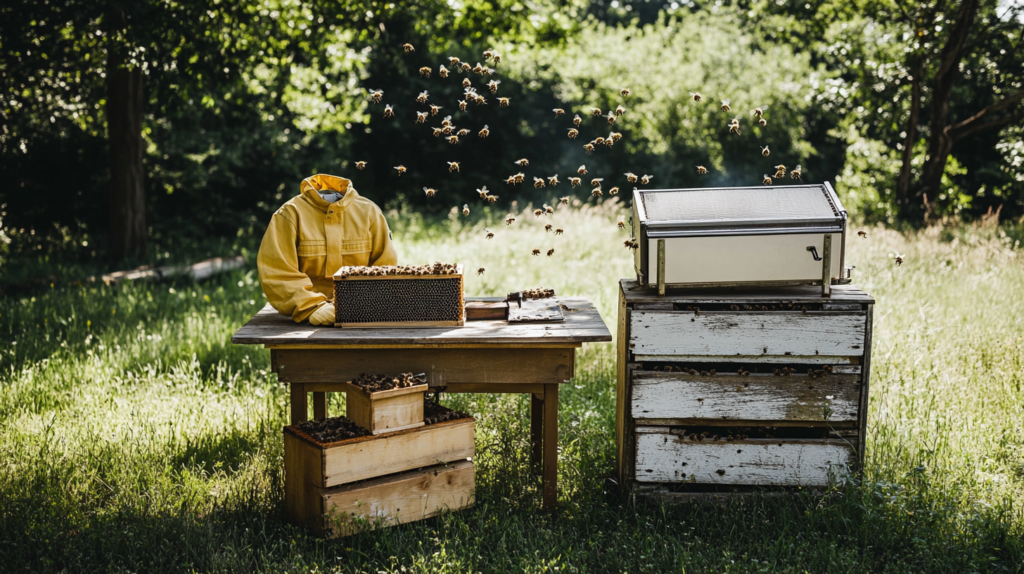
Goodland Bee Supply offers excellent value with their complete hive kit, which includes components often sold separately by other manufacturers. This kit particularly appeals to beginners who want professional-grade equipment without the premium price.
What’s Included:
- 10-frame deep hive body
- 10-frame medium super
- 20 frames total (10 deep, 10 medium)
- Telescoping cover with aluminum top
- Inner cover
- Screened bottom board with removable tray
- Full bee suit
- Leather gloves
- Smoker
- Hive tool
- Bee brush
The inclusion of both deep and medium boxes allows beginners to experience the full beekeeping cycle from colony establishment through honey harvest. The removable tray in the screened bottom board helps with mite monitoring, an important aspect of modern beekeeping.
Pros: Includes honey super, good value, aluminum-topped cover for durability Cons: Assembly required for all components, basic instruction manual Price Range: $220-$260
4. Little Giant 10-Frame Beginner Hive Kit

Little Giant Farm & Ag specializes in agricultural equipment, bringing their expertise to beekeeping with this well-rounded starter kit. The focus on durability makes this kit particularly suitable for areas with harsh weather conditions.
What’s Included:
- 10-frame deep hive body
- 10 frames with wax-coated plastic foundation
- Telescoping cover
- Inner cover
- Solid bottom board
- Bee jacket with attached veil
- Canvas gloves
- Smoker
- Hive tool
The wax-coated plastic foundation in this kit offers advantages for beginners, as it’s more durable than traditional wax foundation and bees readily accept it. The solid bottom board design suits beekeepers in colder climates where screened bottoms might provide too much ventilation.
Pros: Durable construction, suitable for cold climates, plastic foundation accepted by bees Cons: Solid bottom board limits ventilation options, basic glove quality Price Range: $160-$200
5. Beekeeping Starter Kit by VIVO
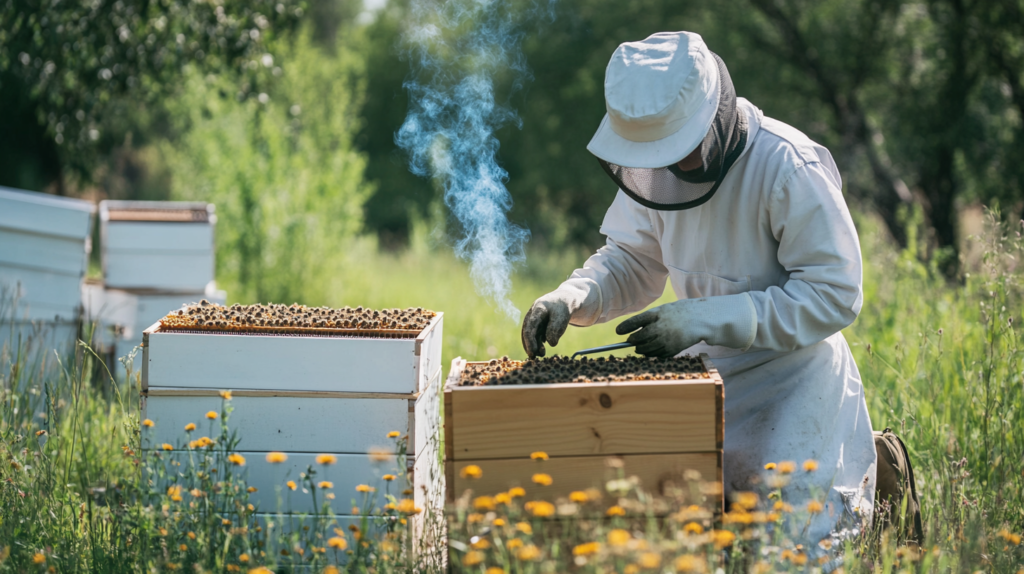
VIVO brings innovation to traditional beekeeping with their starter kit that includes several modern conveniences. This kit appeals to tech-savvy beginners who appreciate contemporary approaches to classic practices.
What’s Included:
- 10-frame Langstroth hive body
- 10 frames with foundation
- Telescoping cover
- Inner cover
- Screened bottom board
- Full bee suit with integrated veil
- Ventilated gloves
- Stainless steel smoker
- Multi-tool hive tool
- Queen excluder
- Entrance reducer
The stainless steel smoker in this kit represents a significant upgrade over typical tin models, offering better heat retention and longevity. The inclusion of a queen excluder allows beginners to practice proper honey super management from the start.
Pros: Stainless steel smoker, includes queen excluder, modern design elements Cons: Higher learning curve with additional components, premium pricing Price Range: $250-$290
6. Hoover Hives 8-Frame Beginner Kit

The 8-frame design from Hoover Hives offers an interesting alternative for beginners who might struggle with the weight of traditional 10-frame equipment. This kit focuses on manageable components while maintaining professional standards.
What’s Included:
- 8-frame deep hive body
- 8-frame medium super
- 16 frames total with foundation
- Telescoping cover
- Inner cover
- Screened bottom board
- Bee jacket
- Gloves
- Smoker
- Hive tool
The reduced frame count makes this kit particularly suitable for beginners who might have physical limitations or prefer lighter equipment. Despite the smaller size, the 8-frame format remains highly productive and is growing in popularity among experienced beekeepers as well.
Pros: Lighter weight equipment, includes honey super, good for physical limitations Cons: Less standard than 10-frame equipment, smaller honey yields Price Range: $190-$230
7. Apimaye Ergo Plus Beginner Set
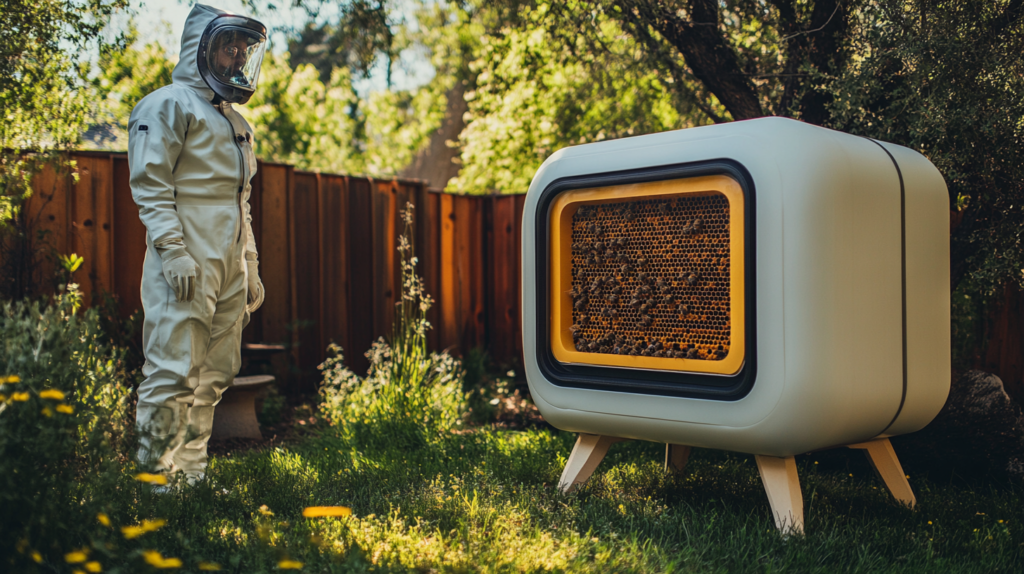
Apimaye revolutionizes traditional beekeeping with their insulated plastic hive design. This kit represents the most modern approach to beekeeping equipment and offers unique advantages for specific climates and situations.
What’s Included:
- Insulated plastic hive body
- Plastic frames with foundation
- Integrated telescoping cover
- Built-in screened bottom board
- Observation windows
- Full bee suit
- Gloves
- Smoker
- Hive tool
The insulated design helps maintain stable hive temperatures, reducing stress on bee colonies during extreme weather. The observation windows allow beginners to monitor colony progress without opening the hive, minimizing disturbance to the bees.
Pros: Modern insulated design, integrated components, observation windows Cons: Non-traditional approach, higher cost, limited expansion options Price Range: $300-$350
8. Assembled Bee Hive Kit by Honey Keeper

Honey Keeper addresses the assembly challenge that intimidates many beginners by providing a fully assembled hive kit. This approach allows newcomers to focus on learning bee behavior rather than construction techniques.
What’s Included:
- Pre-assembled 10-frame deep hive body
- Pre-assembled frames with foundation
- Telescoping cover
- Inner cover
- Screened bottom board
- Bee suit
- Gloves
- Smoker
- Hive tool
- Detailed instruction booklet
The pre-assembly eliminates potential mistakes that beginners might make during construction, ensuring proper gaps and alignment essential for bee health. The comprehensive instruction booklet provides excellent guidance for new beekeepers.
Pros: Fully assembled components, excellent instructions, ready to use immediately Cons: Higher cost due to assembly, limited customization options Price Range: $240-$280
9. Complete Beehive Kit by Foxhound Bee Company

Foxhound Bee Company rounds out our list with a kit that balances completeness with affordability. This kit particularly appeals to budget-conscious beginners who don’t want to compromise on essential features.
What’s Included:
- 10-frame deep hive body
- 10 frames with foundation
- Telescoping cover
- Inner cover
- Screened bottom board
- Bee jacket
- Gloves
- Smoker
- Hive tool
- Basic bee brush
While this kit includes fewer premium features than some competitors, all components meet professional standards and provide everything necessary for successful beekeeping. The company offers excellent customer support for beginners with questions.
Pros: Budget-friendly pricing, professional-grade components, good customer support Cons: Basic feature set, no honey super included, minimal accessories Price Range: $150-$190
Comparative Analysis: Choosing the Right Kit for Your Needs
| Kit Name | Price Range | Hive Count | Honey Super | Assembly Level | Best For |
| Harvest Lane Honey | $280-$320 | 2 | No | Partial | Serious beginners |
| Mann Lake Basic | $180-$220 | 1 | No | Required | Quality-focused |
| Goodland Complete | $220-$260 | 1 | Yes | Required | Value seekers |
| Little Giant | $160-$200 | 1 | No | Required | Cold climates |
| VIVO Starter | $250-$290 | 1 | No | Partial | Tech enthusiasts |
| Hoover 8-Frame | $190-$230 | 1 | Yes | Required | Physical limitations |
| Apimaye Ergo | $300-$350 | 1 | No | Assembled | Modern approach |
| Honey Keeper | $240-$280 | 1 | No | Assembled | Convenience |
| Foxhound | $150-$190 | 1 | No | Required | Budget-conscious |
Essential Factors to Consider When Selecting Your First Kit
Climate and Regional Considerations
Your local climate significantly impacts which beginner beekeeping kits will serve you best. Regions with harsh winters benefit from solid bottom boards and sturdy construction, while hot climates require excellent ventilation and breathable protective gear.
Northern beekeepers should prioritize kits with solid bottom boards or removable screens, while southern regions benefit from screened bottom boards year-round. The Apimaye insulated hive excels in extreme climates, while traditional wood construction suits moderate conditions.
Budget and Long-term Investment Planning
While budget considerations are important, view your kit purchase as a long-term investment. Quality components last for decades with proper care, making the initial higher cost worthwhile. However, starting with a basic kit and upgrading components over time remains a valid approach for budget-conscious beginners.
Consider the total cost of beekeeping beyond the initial kit. You’ll need to purchase bees, feed, medications, and additional equipment as your operation grows. Planning for these expenses helps determine the appropriate kit budget.
Physical Capabilities and Hive Management
Beekeeping involves regular lifting of hive components, with full honey supers weighing 60+ pounds. The 8-frame Hoover Hives kit addresses this concern with lighter equipment, while maintaining productivity. Consider your physical capabilities honestly when selecting equipment size.
Arthritis, back problems, or other physical limitations shouldn’t prevent beekeeping enjoyment. Modified equipment and proper techniques allow most people to successfully manage bee colonies.
Getting Started: From Kit to Colony
Site Selection and Hive Placement
Proper hive placement affects colony success more than equipment choice. Select locations with morning sun, afternoon shade, and protection from strong winds. Ensure easy access for inspections while maintaining appropriate distance from neighbors and high-traffic areas.
Legal considerations vary by location, with many urban areas requiring permits or adherence to specific placement rules. Check local regulations before installing your hive, as some areas restrict beekeeping or require registration.
Obtaining Your First Bees
Most beginners purchase package bees (2-3 pounds of bees with a queen) or nucleus colonies (small established colonies). Package bees cost less but require more initial care, while nucleus colonies establish faster but cost more.
Local beekeeping associations often coordinate group purchases, reducing costs and providing mentor support. This approach also ensures bees adapted to your local climate and available forage.
First Season Expectations
Realistic expectations prevent disappointment during your first beekeeping season. Most colonies require the entire first year to establish, with honey harvest typically beginning in the second year. Focus on colony health and growth rather than honey production initially.
Plan for regular inspections every 7-14 days during active season, learning to read colony condition and address problems early. Document your observations to track colony progress and identify patterns.
Advanced Tips for Maximizing Your Kit Investment
Customization and Upgrades
Most beginner beekeeping kits provide excellent foundations for customization as your experience grows. Consider upgrading to higher-quality gloves after your first season, as improved dexterity significantly enhances inspection efficiency.
Adding screened inner covers, entrance reducers, and mouse guards extends your equipment’s versatility. These relatively inexpensive additions provide options for different seasonal management strategies.
Maintenance and Longevity
Proper maintenance extends equipment life indefinitely. Clean hive components annually, removing propolis and wax buildup. Sand and repaint wooden components every few years to prevent weathering.
Store unused equipment in dry locations to prevent warping and deterioration. Well-maintained hive bodies and frames retain their value and can be sold if you exit beekeeping.
Expansion Planning
Most successful beekeepers expand beyond their initial kit within 2-3 years. Plan expansion by purchasing compatible equipment from the same manufacturer when possible. This ensures proper fit and maintains consistency in your operation.
Consider purchasing additional hive bodies and frames before peak season when demand increases prices and limits availability. Having spare equipment available prevents missed opportunities during swarm season.
Common Mistakes to Avoid with Your First Kit
Assembly and Installation Errors
Improper assembly represents the most common mistake among new beekeepers using kits requiring construction. Frame spacing must maintain bee space (3/8 inch) throughout the hive. Too much or too little space creates problems with comb construction and hive management.
Take time during assembly to ensure square construction and proper fit between components. Slightly loose joints allow for wood expansion but maintain structural integrity.
Protective Gear Misconceptions
Many beginners either over-rely on protective gear or fail to use it properly. While protection is essential, excessive gear hampers movement and reduces inspection efficiency. Learn to work confidently with appropriate protection rather than maximum coverage.
Proper fit is crucial for protective gear effectiveness. Loose suits allow bee entry, while overly tight gear restricts movement. Ensure veils maintain proper distance from your face to prevent stings through the mesh.
Premature Honey Harvesting
The desire for honey harvest often leads beginners to extract too early or take too much honey. Colonies require adequate honey stores for winter survival, with northern regions needing 60+ pounds of stored honey.
Leave honey supers until well-capped and never harvest from the brood chamber. When in doubt, leave honey for the bees rather than risk colony starvation.
Safety Considerations and Best Practices
Sting Prevention and Management
Even with quality protective gear from your beginner beekeeping kits, stings occasionally occur. Learn proper techniques for sting removal and have appropriate medications available if you’re allergic to bee venom.
Bee behavior varies with weather, season, and colony condition. Avoid hive work during stormy weather or late in the day when guard bees are more defensive. Work slowly and deliberately to minimize disturbance.
Tool Safety and Proper Usage
Hive tools are sharp and require careful handling to prevent injury. Maintain tools in good condition, with sharp edges for efficient use but proper storage to prevent accidents.
Smoker operation requires fire safety awareness. Use appropriate fuel materials and ensure complete extinguishing after use. Never leave smokers unattended or use them during fire danger periods.
Building Your Beekeeping Knowledge Base
Educational Resources
Successful beekeeping requires ongoing education beyond what any kit instructions provide. Join local beekeeping associations for hands-on learning and mentor relationships. Most areas have active groups welcoming new members.
Quality books provide comprehensive information for reference during your beekeeping journey. “The Beekeeper’s Bible” by Richard Jones and “First Lessons in Beekeeping” by Keith Delaplane offer excellent foundational knowledge.
Online Communities and Support
Online beekeeping forums provide 24/7 access to experienced beekeepers willing to answer questions and share advice. Popular platforms include Beesource.com and various Facebook groups dedicated to regional beekeeping.
YouTube channels offer visual learning opportunities, showing proper techniques and common scenarios. However, verify information through multiple sources, as quality varies significantly among content creators.
Record Keeping and Documentation
Maintain detailed records of hive inspections, noting colony population, queen status, honey stores, and any problems observed. These records become invaluable for tracking colony progress and identifying recurring issues.
Document weather patterns, bloom periods, and local conditions affecting your bees. This information helps predict future seasons and optimize management decisions.
For more expert pet care tips and product recommendations, visit BlithePet.com — your trusted source for pet wellness.
Frequently Asked Questions
Q: How much honey can I expect from my first beekeeping kit setup? A: Most beginner beekeeping kits support colonies that produce 30-60 pounds of surplus honey annually after the establishment year. First-year colonies typically require all their honey production for winter survival, with harvest beginning in the second season.
Q: Do I need two hives when starting with beginner beekeeping kits? A: While single-hive kits are adequate for learning, most experienced beekeepers recommend starting with two colonies. Multiple hives allow comparison of normal versus abnormal conditions and provide resources for helping struggling colonies.
Q: What’s the difference between 8-frame and 10-frame beginner beekeeping kits? A: 8-frame equipment weighs approximately 20% less than 10-frame equivalents, making inspection and honey harvest easier for those with physical limitations. However, 10-frame equipment remains the industry standard with wider component availability.
Q: How often should I inspect hives from my beginner kit? A: During active season (spring through fall), inspect colonies every 7-14 days. Weekly inspections work best for beginners learning to read colony conditions, while experienced beekeepers may extend intervals to every two weeks.
Q: Can I use different brands of equipment together if I expand beyond my original kit? A: Most manufacturers follow standard Langstroth dimensions, allowing mixing of brands. However, slight variations in construction may create gaps affecting bee space. When possible, maintain consistency with your original kit manufacturer.
Q: What time of year should I start with my beginner beekeeping kit? A: Spring installation (April-May in most regions) provides the full season for colony establishment. Some areas support late summer installations, but spring starts offer the best success rates for beginners using new kits.
Conclusion
Selecting the right beginner beekeeping kits sets the foundation for years of successful and enjoyable beekeeping. Whether you choose the comprehensive Harvest Lane Honey kit for serious commitment, the budget-friendly Foxhound option for cost-conscious starts, or the innovative Apimaye design for modern approaches, each kit on our list provides the essential components needed for colony success.
Remember that beekeeping success depends more on knowledge, patience, and proper technique than on having the most expensive equipment. Any of these top beginner beekeeping kits will serve you well when combined with ongoing education and connection with experienced beekeepers in your area.
The journey from beginner to experienced beekeeper brings rewards far beyond honey harvest. You’ll contribute to pollinator conservation, develop a deeper connection with nature, and join a community of passionate individuals dedicated to these remarkable insects.
Have experience with any of these beginner beekeeping kits? Share your insights in the comments below to help other aspiring beekeepers make informed decisions!

